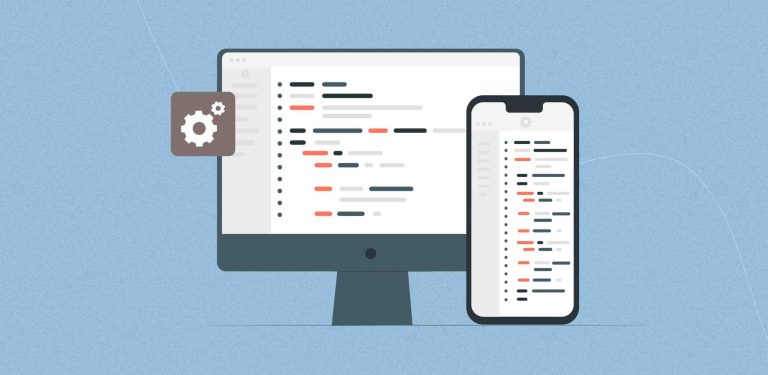


Generative AI development has rapidly become one of the most transformative advancements in the field of Artificial Intelligence, offering unprecedented capabilities that are reshaping industries and redefining technological boundaries. This sophisticated process involves creating AI models that can generate new, original content—ranging from hyper-realistic images and videos to human-like text, audio, and even complex data models. Unlike traditional AI, which focuses primarily on analyzing and interpreting existing information, Generative AI development enables machines to innovate, create, and mimic human creativity at a scale previously unimaginable.
As we stand on the edge of a new era in 2024, the implications of Generative AI are vast. Businesses across various sectors are beginning to realize its potential to revolutionize everything from content creation and product design to customer engagement and decision-making. This blog will guide you through the intricate journey of Generative AI development, delving into the key stages from concept to execution, exploring the various benefits and applications of this technology, and illustrating how it can be strategically used to drive business success in an increasingly competitive landscape.
Generative AI is a specialized domain within Artificial Intelligence that focuses on creating models capable of generating new, original content rather than merely processing or analyzing existing data. This innovative branch of AI stands in contrast to traditional AI, which is typically geared toward tasks such as classification, prediction, and optimization. While traditional AI excels in making sense of the data it is fed, Generative AI goes a step further by using learned patterns to create new data—data that is often indistinguishable from content created by humans.
At its core, Generative AI leverages advanced machine learning algorithms to produce novel outputs across a wide array of mediums. These outputs can include text, images, audio, videos, or even complex code structures. The key to Generative AI’s capabilities lies in its ability to learn from vast amounts of data, recognize patterns, and then apply these patterns to generate something entirely new. This process is similar to how humans learn from experience and creativity, blending learned knowledge with imagination to produce innovative results.
The fundamental difference between Generative AI and traditional AI lies in their objectives and methodologies. Traditional AI is typically designed to perform tasks like classification, regression, or clustering, where the goal is to make sense of existing data. For example, a traditional AI model might be trained to recognize objects in an image or predict future trends based on historical data. The output of traditional AI is often a decision, a prediction, or an interpretation based on the data it has been trained on.
In contrast, Generative AI is focused on the creation of new content. It uses its training data not just to understand patterns but to produce new instances that follow these patterns. For example, a Generative AI model trained on thousands of landscape photos could generate entirely new, photorealistic landscapes that have never existed before. Similarly, a model trained on music could compose original pieces in the style of a particular genre or artist.
This ability to generate content is what makes Generative AI particularly valuable in creative industries, as well as in fields where there is a need for rapid prototyping, simulation, or the generation of synthetic data for testing and validation purposes.
Generative AI development is a multifaceted and intricate process that involves creating AI systems capable of generating new, original content or data based on learned patterns from existing datasets. This process goes beyond conventional AI methodologies, requiring a deep understanding of machine learning, data science, and the specific domain in which the AI is being applied. The development of Generative AI models is not a linear process; it involves several critical stages, each contributing to the creation of a robust and effective AI solution.
Generative AI development offers a multitude of benefits, making it an indispensable tool for businesses across a wide array of sectors. By harnessing the power of machine learning and advanced algorithms, Generative AI can drive innovation, efficiency, and personalization in ways that were previously unattainable. Below, we explore these benefits in detail and provide insights into the diverse applications of this groundbreaking technology.
Generative AI development offers unparalleled opportunities for creativity and innovation by enabling the generation of new ideas, designs, and concepts that were previously unimaginable. Whether it’s in art, design, or product development, Generative AI allows businesses to push the boundaries of what’s possible, creating unique outputs that can set them apart in the market. By leveraging machine learning models trained on vast datasets, businesses can use Generative AI to develop fresh, innovative solutions that keep them ahead of the curve and responsive to evolving consumer demands.
One of the standout advantages of Generative AI development is its ability to deliver highly personalized content, products, and experiences. By analyzing extensive customer data, Generative AI can tailor outputs to individual preferences, making interactions more relevant and engaging. This level of personalization enhances customer satisfaction and loyalty by ensuring that every touchpoint with the brand feels uniquely catered to the consumer’s tastes and needs. Whether it’s creating personalized marketing content or designing custom products, Generative AI helps businesses connect with their customers on a deeper, more meaningful level.
Generative AI development plays a crucial role in automating repetitive and time-consuming tasks, allowing human resources to focus on more strategic, value-added activities. From automating content generation to streamlining complex data analysis, Generative AI reduces the workload on teams and accelerates processes that traditionally required significant manual effort. This automation not only boosts productivity but also minimizes the risk of human error, ensuring more consistent and reliable outcomes. By integrating Generative AI into their operations, businesses can enhance efficiency and drive faster, more informed decision-making.
Generative AI development significantly contributes to cost efficiency by reducing the reliance on manual labor and enhancing productivity across various business functions. By automating tasks that would otherwise require substantial time and resources, Generative AI helps organizations lower operational costs while maintaining or even improving output quality. Moreover, the ability of Generative AI to generate content, design products, and analyze data at scale enables businesses to achieve more with less, leading to better allocation of resources and increased profitability. This makes Generative AI an essential tool for companies looking to optimize their cost structures in a competitive market.
In the realm of content creation, Generative AI development is revolutionizing how businesses produce high-quality text, images, videos, and audio. Whether for marketing, entertainment, or educational purposes, Generative AI can generate compelling content that is both creative and consistent, meeting the diverse needs of various audiences. This capability is especially valuable in industries that require large volumes of content, such as digital marketing and media production, where Generative AI can produce engaging and original material at a fraction of the time and cost compared to traditional methods.
Generative AI development is making significant inroads in product design, particularly in industries such as fashion, automotive, and consumer electronics. By leveraging AI-driven design tools, businesses can create innovative prototypes and product designs that push the boundaries of conventional aesthetics and functionality. Generative AI allows designers to explore a vast array of design possibilities, optimize for various parameters, and rapidly iterate on ideas. This not only accelerates the design process but also leads to the creation of more innovative and market-responsive products, enhancing a company’s competitive edge.
In healthcare, Generative AI development is opening new frontiers in personalized medicine, drug discovery, and medical imaging analysis. By analyzing patient data, Generative AI can assist in developing individualized treatment plans tailored to a patient’s unique genetic makeup and health profile. In drug discovery, AI models can predict how different compounds interact at a molecular level, accelerating the development of new treatments. Furthermore, Generative AI in medical imaging can enhance the accuracy of diagnostics by generating detailed visualizations and identifying patterns that might be missed by the human eye, ultimately improving patient outcomes.
Generative AI development is transforming the finance industry by automating complex processes such as financial analysis, fraud detection, and risk management. AI-driven models can analyze vast amounts of financial data in real-time, identifying trends and anomalies that can inform investment strategies and financial decisions. In fraud detection, Generative AI can create models that simulate fraudulent activities, enabling better detection and prevention mechanisms. Moreover, by automating routine tasks like reporting and compliance checks, Generative AI allows financial professionals to focus on higher-level analysis and decision-making, driving better business results in the highly competitive financial sector.
Successfully implementing Generative AI requires more than just theoretical knowledge; it demands a combination of specialized skills, tools, and strategies tailored to meet the unique needs of each business. As the landscape of AI continues to evolve, businesses must partner with experienced professionals who can provide comprehensive Generative AI development services. These services are designed to guide organizations through every stage of the AI development process, ensuring that the solutions not only meet but exceed business objectives. Below, we explore the essential services involved in Generative AI development:
The journey of Generative AI development begins with a clear understanding of the business goals and the strategic role AI can play in achieving them. Generative AI consulting provides businesses with expert guidance on how to effectively leverage AI technology. This service includes:
Identifying specific areas within the business where Generative AI can deliver the most value. This involves understanding the company’s objectives, challenges, and opportunities, and developing a roadmap that aligns AI initiatives with business goals.
Choosing the right AI models, algorithms, and tools that best suit the business’s needs. This includes evaluating various Generative AI frameworks, such as GANs, VAEs, and transformers, and selecting the most appropriate one based on the project’s requirements.
Crafting a detailed implementation plan that outlines the steps needed to integrate Generative AI into existing business processes. This includes defining timelines, resources, and key performance indicators (KPIs) to measure success.
For Generative AI to deliver tangible results, it must be seamlessly integrated into the existing technology stack and workflows. Generative AI integration services ensure that AI solutions are implemented smoothly, with minimal disruption to current operations. This includes:
Assessing the compatibility of Generative AI models with existing systems and software. The goal is to ensure that the AI solution can communicate and function effectively within the established IT infrastructure.
Redesigning business processes to incorporate AI-driven automation and innovation. This often involves streamlining operations, reducing manual intervention, and enhancing productivity.
Providing training to staff and stakeholders on how to use and interact with the new AI systems. This is crucial for maximizing the potential of the AI solution and ensuring that it is utilized effectively.
The foundation of any successful Generative AI model lies in the quality and relevance of the data it is trained on. Data analysis services are essential for:
Gathering comprehensive datasets that are relevant to the business’s goals. This includes both structured and unstructured data from various sources, such as databases, IoT devices, and social media platforms.
Cleaning, organizing, and labeling data to ensure it is suitable for training the AI model. This step is crucial for eliminating biases and inaccuracies that could affect the model’s performance.
Identifying and creating key features from the data that will help the AI model learn and make accurate predictions. This involves transforming raw data into meaningful inputs that the model can use to generate outputs.
Developing a robust and reliable Generative AI model is the core of the entire AI development process. Generative AI model development includes:
Choosing the appropriate type of AI model (e.g., GANs, VAEs, transformers) based on the specific needs of the project. The selection process is guided by factors such as the nature of the data, the desired outputs, and the business’s goals.
Training the AI model using high-quality data and then testing it to ensure accuracy and effectiveness. This step involves iterating on the model to improve its performance and reduce errors.
Conducting rigorous validation processes to ensure that the AI model performs well on unseen data. This is essential for guaranteeing that the model can generalize its learning to new, real-world scenarios.
In many cases, businesses need to replicate successful AI outcomes across different domains or applications. Generative AI replication services enable businesses to:
Apply a proven AI model to new domains or industries, ensuring that the model’s success can be replicated and scaled. This is particularly useful for businesses looking to expand their AI capabilities into new areas.
Modify the AI model to meet the specific needs of a new domain, including adjusting parameters, retraining on new data, and fine-tuning for different use cases.
Ensuring that the AI solution can be scaled to handle increased demand or new applications without compromising performance.
AI models require continuous refinement to stay effective and accurate. Fine-tuning models services involve:
Regularly adjusting the AI model’s parameters to enhance its performance based on new data or changing business requirements. This process helps to keep the model relevant and aligned with the business’s evolving goals.
Identifying and correcting errors or biases that may have emerged during the initial development phase. Fine-tuning helps to improve the model’s reliability and accuracy over time.
Implementing mechanisms that allow the AI model to learn from new data continuously, improving its capabilities without requiring a complete redevelopment.
Different industries have unique requirements and challenges that demand tailored AI solutions. Domain-specific Generative AI solutions development services cater to these needs by:
Developing AI models that are specifically designed to address the challenges and opportunities within a particular industry, such as healthcare, finance, or entertainment.
Ensuring that the AI solutions comply with industry-specific regulations and standards, such as HIPAA in healthcare or GDPR in finance. This is crucial for maintaining legal and ethical standards.
Incorporating custom features and capabilities that address the specific needs of the industry, such as advanced predictive analytics in finance or personalized content generation in marketing.
The success of any AI project hinges on the expertise of the developers involved. Hiring Generative AI developers ensures that businesses have access to:
Developers with specialized knowledge in machine learning, deep learning, and AI model development, who can create cutting-edge solutions tailored to the business’s needs.
Developers who have a track record of successfully implementing AI solutions in various industries, ensuring that the AI model is both practical and innovative.
Developers who work closely with business stakeholders to understand their goals, challenges, and expectations, ensuring that the AI solution is aligned with the business’s vision.
Even after an AI solution is deployed, ongoing support and maintenance are essential to ensure its continued effectiveness. Generative AI support and maintenance services include:
Keeping the AI model up-to-date with the latest advancements in technology and incorporating new features or improvements as needed.
Continuously monitoring the AI model’s performance and addressing any issues or bugs that arise. This ensures that the AI solution remains reliable and effective over time.
Adjusting the AI model to accommodate changes in business needs, such as increased data volume, new use cases, or evolving market conditions.
The development of Generative AI solutions is a complex and multifaceted process that requires specialized tools and platforms to ensure success. These tools not only provide the necessary infrastructure but also streamline the development, training, and deployment of AI models, making the process more efficient and accessible to developers. Below, we delve into some of the most prominent tools and platforms that are integral to the Generative AI development process.
TensorFlow is an open-source machine learning framework developed by Google, widely regarded as one of the most powerful and versatile tools for AI development. It supports a wide range of tasks, from basic data preprocessing to the training and deployment of complex deep learning models. For Generative AI development, TensorFlow offers several features that make it a preferred choice among developers:
TensorFlow’s architecture is designed to be highly flexible, allowing developers to build and experiment with different types of AI models, including Generative Adversarial Networks (GANs) and Variational Autoencoders (VAEs). It also supports distributed computing, enabling the training of large models across multiple GPUs or even cloud-based platforms.
TensorFlow comes with an extensive set of libraries and tools that simplify the process of building, training, and deploying AI models. For instance, TensorFlow Hub allows developers to reuse pre-trained models, while TensorFlow Extended (TFX) provides an end-to-end platform for deploying production-ready AI models.
Being open-source, TensorFlow benefits from a large and active community of developers, researchers, and industry professionals. This community-driven approach ensures continuous improvements, regular updates, and a wealth of resources, such as tutorials, documentation, and forums, which can be invaluable for developers working on Generative AI projects.
PyTorch, developed by Facebook’s AI Research lab, is another open-source deep learning framework that has gained immense popularity among AI developers. Known for its dynamic computation graph and ease of use, PyTorch is particularly favored in academic and research settings, but it also has strong applications in industry for Generative AI development.
One of PyTorch’s standout features is its dynamic computation graph, which allows developers to modify the graph on-the-fly during runtime. This flexibility makes it easier to experiment with different model architectures and debugging, which is especially useful in the iterative process of developing Generative AI models.
PyTorch is tightly integrated with Python, making it intuitive for developers familiar with the language. Its syntax and structure are user-friendly, allowing for quick prototyping and deployment. Moreover, PyTorch supports various Python libraries, such as NumPy and SciPy, which are commonly used in AI development.
PyTorch is widely used in academic research due to its flexibility and the ease with which it allows researchers to implement new ideas. This has led to PyTorch becoming the framework of choice for many cutting-edge Generative AI projects, resulting in a rich ecosystem of tutorials, research papers, and pre-trained models that developers can leverage.
GANLab is a specialized tool designed to help developers and researchers visualize and understand Generative Adversarial Networks (GANs), one of the most popular models in Generative AI. Developed by the Georgia Institute of Technology, GANLab is an interactive platform that makes the complex inner workings of GANs more accessible, especially for those who are new to the field.
GANLab provides an interactive environment where users can observe the training process of GANs in real-time. This visualization includes how the generator and discriminator networks interact, how the loss functions evolve, and how the generated outputs improve over time. Such insights are crucial for understanding the behavior of GANs and for making informed decisions during model development.
GANLab is particularly valuable as an educational tool. It allows users to experiment with different parameters, observe the effects of these changes, and gain a deeper understanding of the principles behind GANs. This makes it an excellent resource for both students and professionals looking to enhance their knowledge of Generative AI.
By providing a visual and interactive approach, GANLab simplifies the experimentation process, enabling developers to quickly test hypotheses and understand the dynamics of their models without delving into complex coding or mathematical details.
Runway ML is a platform that democratizes the development of AI models by providing a user-friendly interface that requires minimal coding knowledge. It is particularly appealing to creatives, designers, and developers who want to integrate AI into their projects without needing deep technical expertise.
Runway ML offers a wide range of pre-built AI models that can be used out-of-the-box for various Generative AI applications, such as image and video generation, style transfer, and text generation. Users can drag and drop these models into their projects and fine-tune them using simple, intuitive controls, making it accessible to a broader audience.
The platform supports easy integration with popular creative tools, such as Adobe Photoshop, Unity, and Unreal Engine. This allows developers and designers to incorporate Generative AI into their existing workflows seamlessly, enhancing creativity and productivity.
Runway ML fosters collaboration by allowing users to share their AI models and workflows with others. This collaborative approach not only accelerates the development process but also encourages the exchange of ideas and innovations within the AI community.
These Generative AI tools play a crucial role in the development and deployment of AI solutions across various industries. By providing the necessary infrastructure, these tools enable developers to build, test, and refine AI models efficiently, ensuring that the final product meets the desired specifications and performance criteria. Whether you are a seasoned AI developer or a newcomer to the field, leveraging these tools can significantly enhance your ability to create cutting-edge Generative AI applications that drive innovation and deliver real value to your business.
As businesses continue to seek innovative ways to differentiate themselves in a competitive market, Generative AI development is playing a pivotal role in driving digital transformation. In 2024, we can expect to see Generative AI being used across various industries, including healthcare, finance, entertainment, and eCommerce. Companies that adopt Generative AI solutions can benefit from enhanced creativity, improved efficiency, and the ability to offer personalized experiences to their customers. Additionally, Generative AI can help businesses automate complex tasks, reduce operational costs, and unlock new revenue streams.
Get to know how to empower your business with our Generative AI development services.
Generative AI Development is rapidly becoming a game-changer across various industries, driving innovation, enhancing efficiency, and opening up new possibilities for businesses and consumers alike. This section explores how Generative AI is being applied in specific industries, highlighting its transformative impact and the diverse ways it is being utilized.
In the healthcare industry, Generative AI development is revolutionizing patient care, medical research, and diagnostics. One of the most significant applications is in the generation of medical images. AI models can create highly accurate synthetic medical images, which can be used to train radiologists, enhance diagnostic accuracy, and even simulate rare conditions for research purposes. This capability reduces the need for large datasets of real patient images, thereby protecting patient privacy and accelerating the development of diagnostic tools.
Another critical application is the personalization of treatment plans. By analyzing a patient’s medical history, genetic information, and current health status, Generative AI can develop tailored treatment plans that optimize outcomes for individual patients. This approach not only improves patient care but also enhances the efficiency of healthcare providers by enabling more precise and effective treatments.
Moreover, Generative AI is making strides in drug discovery. Traditionally, developing a new drug is a lengthy and costly process. However, Generative AI can simulate the chemical properties of potential drug compounds, predict their effectiveness, and even generate novel molecules that have never been synthesized before. This accelerates the discovery process and increases the likelihood of finding successful treatments for various diseases.
In the finance industry, Generative AI development is being used to streamline operations, enhance decision-making, and reduce risks. One of the key applications is in automated financial reporting. Generative AI models can analyze vast amounts of financial data and generate accurate reports in real time. This capability not only reduces the workload for financial analysts but also ensures that reports are free from human errors.
Predictive market analysis is another area where Generative AI is making a significant impact. By analyzing historical data and current market trends, AI models can generate forecasts about future market movements. These predictions enable investors and financial institutions to make informed decisions, optimize their portfolios, and mitigate potential risks.
Fraud detection is a critical concern in the finance industry, and Generative AI is playing a pivotal role in enhancing security measures. AI models can generate scenarios that mimic fraudulent activities, allowing financial institutions to train their systems to detect and respond to these threats more effectively. This proactive approach helps in identifying fraudulent transactions before they cause significant damage, thereby protecting both the institution and its customers.
The entertainment industry is one of the most dynamic fields where Generative AI development is pushing creative boundaries. AI-generated content is increasingly being used in movies, music, and video games, providing new tools for creators and producers. For instance, Generative AI can create realistic visual effects, generate background music, and even write scripts or dialogue. This not only reduces production time and costs but also allows creators to explore new artistic possibilities that were previously unimaginable.
In video games, Generative AI is being used to create immersive environments, realistic characters, and dynamic storylines. AI-generated virtual characters can interact with players in more lifelike ways, enhancing the gaming experience. Additionally, Generative AI can generate entire game worlds, complete with unique landscapes, architecture, and ecosystems, offering players an endless variety of experiences.
Virtual reality (VR) and augmented reality (AR) are also benefiting from Generative AI. AI-generated content can be seamlessly integrated into VR and AR environments, creating more immersive and interactive experiences for users. This technology is not only transforming the entertainment industry but also opening up new opportunities in fields such as education and training.
Generative AI development is driving significant advancements in the eCommerce industry by enabling more personalized and efficient shopping experiences. One of the most notable applications is in personalized product recommendations. By analyzing customer behavior, preferences, and purchase history, Generative AI can generate tailored product suggestions that align with individual tastes and needs. This level of personalization enhances customer satisfaction, increases sales, and strengthens brand loyalty.
Automated content creation is another area where Generative AI development is making an impact. AI models can generate product descriptions, marketing copy, and social media content that resonates with target audiences. This capability not only saves time and resources for eCommerce businesses but also ensures that the content is optimized for search engines and conversions.
Virtual try-on experiences are becoming increasingly popular in the eCommerce space, particularly in the fashion and beauty industries. Generative AI enables customers to visualize how products such as clothing, accessories, or makeup will look on them before making a purchase. This interactive experience reduces the likelihood of returns and enhances the overall shopping experience.
The education sector is witnessing a transformation with the integration of Generative AI, which is enabling more personalized and effective learning experiences. One of the key applications is in the development of AI-generated educational content. Generative AI can create customized lesson plans, quizzes, and assignments that cater to the unique learning needs of individual students. This personalized approach helps students grasp complex concepts more effectively and improves overall academic performance.
Additionally, Generative AI is being used to develop intelligent tutoring systems that provide real-time feedback and support to students. These AI tutors can generate explanations, examples, and practice problems tailored to the student’s current understanding, helping them master subjects at their own pace. This technology is particularly beneficial in remote learning environments, where students may not have immediate access to a teacher or tutor.
Generative AI is also enhancing the development of virtual classrooms and educational simulations. AI-generated environments can recreate historical events, scientific phenomena, or complex systems, providing students with immersive and interactive learning experiences. These simulations help students understand abstract concepts and apply their knowledge in practical scenarios, making learning more engaging and effective.
In the field of Unified Communications (UC), Generative AI is being utilized to enhance collaboration, streamline communication, and improve user experiences. One of the primary applications is in the generation of natural language responses for chatbots and virtual assistants. Generative AI enables these systems to generate contextually relevant and human-like responses, improving the efficiency and effectiveness of customer service interactions.
Generative AI is also being used to create personalized communication experiences in UC platforms. For instance, AI models can analyze communication patterns and preferences to generate customized meeting agendas, summaries, and follow-up actions. This level of personalization enhances productivity and ensures that communication is more targeted and efficient.
Moreover, Generative AI is playing a role in the development of real-time translation and transcription services. AI-generated translations can bridge language barriers in global teams, enabling seamless collaboration across different regions. Similarly, AI-generated transcriptions provide accurate and timely records of meetings and conferences, making it easier for participants to review and share information.
Generative AI is far more than a fleeting technological trend; it represents a profound paradigm shift in how technology interacts with the world and its users. Unlike traditional AI, which primarily analyzes and interprets existing data, Generative AI empowers machines to create, innovate, and adapt autonomously. This capability not only pushes the boundaries of what is technologically possible but also opens up new frontiers in creativity, automation, and personalization, making it a cornerstone of modern technological advancement.
Creativity has long been considered a uniquely human trait, rooted in the ability to imagine, design, and produce original content. Generative AI, however, is challenging this notion by enabling machines to generate novel content that rivals human creativity. Whether it’s designing intricate architectural blueprints, composing music, or writing compelling prose, Generative AI is making significant strides in areas traditionally dominated by human creativity. This technology is not merely replicating existing patterns; it is innovating by combining different elements in new and unexpected ways, producing outputs that can inspire human creators and push the boundaries of artistic expression.
For example, in the entertainment industry, Generative AI is being used to create realistic virtual characters, generate entire movie scripts, and even compose original soundtracks. In the field of design, AI-generated art and architecture are beginning to blur the lines between human and machine creativity, leading to collaborations that were previously unimaginable. As a result, Generative AI is not just enhancing creativity; it is expanding the very definition of what creativity can be.
Automation has long been a driving force behind technological progress, enabling businesses to increase efficiency, reduce costs, and scale operations. Generative AI takes automation to the next level by allowing machines to not only perform repetitive tasks but also to generate solutions, designs, and strategies autonomously. This leap in capability means that businesses can automate more complex processes, from product design to marketing content creation, without human intervention.
For instance, in manufacturing, Generative AI can autonomously design new products based on specific criteria such as cost, material properties, and aesthetic preferences. In marketing, AI can generate personalized content for individual customers, adapting messages in real-time to resonate with different audiences. This level of automation not only streamlines operations but also allows businesses to respond more quickly and effectively to market changes, providing a significant competitive advantage.
Personalization is increasingly becoming a critical factor in customer engagement and satisfaction. Consumers today expect tailored experiences that cater to their individual preferences and needs. Generative AI plays a crucial role in delivering these personalized experiences at scale. By analyzing vast amounts of data, Generative AI can create customized content, products, and recommendations that resonate with individual users.
In eCommerce, for example, Generative AI can generate personalized product recommendations based on a customer’s browsing history, purchase behavior, and even real-time interactions. In education, AI-driven personalized learning pathways can adapt to the needs and learning styles of each student, enhancing the effectiveness of educational programs. This level of personalization is not just a value-add; it is becoming a necessity in a world where consumers are inundated with choices and demand experiences that feel uniquely crafted for them.
The impact of Generative AI on economic growth cannot be overstated. As this technology continues to evolve, it is poised to drive significant economic expansion by enabling new business models, creating new industries, and enhancing productivity across sectors. Businesses that leverage Generative AI can develop innovative products and services, enter new markets, and optimize their operations, all of which contribute to overall economic growth.
Moreover, the development and deployment of Generative AI are creating new job opportunities in fields such as AI research, data science, and AI ethics, further contributing to economic growth. As industries adopt Generative AI, the demand for skilled professionals who can develop, manage, and maintain these AI systems will increase, leading to the creation of new roles and the evolution of existing ones.
Generative AI is set to play a pivotal role in shaping the future of industries across the board. From healthcare and finance to entertainment and manufacturing, the ability of AI to generate new content, designs, and strategies will drive innovation and transform industry practices. In healthcare, for example, Generative AI can create personalized treatment plans based on a patient’s unique genetic makeup and medical history, leading to more effective and targeted therapies. In finance, AI-generated models can simulate market scenarios and predict economic trends, helping businesses make more informed decisions.
As Generative AI continues to mature, its applications will expand, and its influence on industry practices will deepen. Companies that embrace this technology early will be better positioned to lead in their respective fields, setting the stage for long-term success.
Generative AI development is a complex and iterative journey that involves multiple stages, each requiring careful planning, execution, and refinement. This process is critical to ensure that the AI model not only meets the intended objectives but also delivers value in real-world applications. Below is a detailed exploration of each key stage in the Generative AI development process.
The first stage in the Generative AI development process is conceptualization. This is where the foundation of the entire project is laid, as it involves identifying the specific problem or opportunity that Generative AI can address. The success of the project heavily depends on a clear and precise definition of the project’s goals and objectives.
During this phase, stakeholders collaborate to determine the scope of the project. They analyze the business needs, market demands, and technological possibilities to identify where Generative AI can provide a unique solution. For instance, a company in the fashion industry might identify the need to generate new clothing designs, while a healthcare provider might explore the use of AI to create personalized treatment plans.
Once the problem or opportunity is clearly defined, the next step is to establish measurable goals and objectives. These could include specific performance metrics, such as the level of accuracy required in generated outputs or the desired level of customer engagement. Clear objectives ensure that the development process remains focused and aligned with the overall business strategy.
After the conceptualization phase, the next step is data collection and preprocessing. Data is the backbone of any AI model, and the quality and relevance of the data used directly influence the performance of the Generative AI solution.
During data collection, developers gather a large and diverse dataset that is representative of the outputs they wish to generate. For example, if the goal is to develop an AI model that generates realistic images, the dataset should include a wide range of images covering different styles, subjects, and environments. Similarly, for text generation, the dataset should include diverse samples of the desired language, style, and context.
Once the data is collected, it undergoes preprocessing to ensure it is clean and suitable for training the AI model. Preprocessing involves several steps:
Effective data collection and preprocessing are crucial for developing a robust AI model that can generate high-quality, accurate outputs.
The heart of the Generative AI development process is model development. This stage involves selecting, designing, and training the AI model that will generate the desired outputs. The choice of model architecture is critical, as it must align with the project’s goals and the nature of the data.
The process begins with model selection. Depending on the specific use case, different types of models may be chosen. For instance, Generative Adversarial Networks (GANs) are commonly used for image generation, while Variational Autoencoders (VAEs) might be preferred for tasks that require encoding and decoding complex data structures. Natural Language Processing (NLP) models like GPT (Generative Pre-trained Transformer) are often employed for text generation.
Once the model architecture is selected, the training phase begins. During training, the model learns from the provided dataset by adjusting its internal parameters to minimize the difference between its predictions and the actual data. This process involves:
Training a Generative AI model requires significant computational resources and can take from several hours to several weeks, depending on the model’s complexity and the size of the dataset.
After training, the model undergoes validation and testing. Validation ensures that the model performs well on unseen data, while testing measures the model’s accuracy, robustness, and generalizability. This phase is critical to ensure that the model can produce high-quality outputs that meet the project’s objectives.
Once the model has been developed and tested, the next stage is integration and deployment. This phase involves embedding the Generative AI solution into the existing systems and processes within the organization and deploying it in a real-world environment.
Integration requires careful planning to ensure that the AI model works seamlessly with other software, hardware, and workflows. This might involve creating APIs (Application Programming Interfaces) that allow different systems to communicate with the AI model, as well as developing user interfaces that enable non-technical users to interact with the AI-generated outputs.
Deployment involves moving the AI model from the development environment to the production environment, where it will be used to generate outputs in real time. This phase often includes:
Successful integration and deployment ensure that the Generative AI model delivers value in a real-world context, supporting the organization’s goals and objectives.
The final stage in the Generative AI development process is monitoring and improvement. Even after the AI model has been deployed, it requires continuous monitoring to ensure it performs as expected and adapts to any changes in the environment or data.
Monitoring involves tracking the model’s performance over time, identifying any issues or deviations from expected behavior, and assessing the quality of the generated outputs. Key performance indicators (KPIs) such as accuracy, response time, and user satisfaction are often used to evaluate the model’s effectiveness.
Based on the monitoring results, the model may require improvement or fine-tuning. This could involve retraining the model with new data, adjusting its parameters to improve accuracy, or updating the model to incorporate new techniques or algorithms. Continuous improvement is essential to maintaining the relevance and effectiveness of the Generative AI solution.
The success of your Generative AI project hinges significantly on the expertise, experience, and capabilities of the Generative AI development partner you choose. Given the complexity and specialized nature of Generative AI, selecting the right partner is a critical decision that can make or break your initiative. A well-chosen Generative AI development partner will not only help you bring your vision to life but also ensure that the solution is robust, scalable, and aligned with your business objectives. Here’s a detailed guide to what you should look for in a Generative AI development company:
One of the most important factors in choosing a Generative AI development partner is their expertise in the field. Generative AI is a rapidly evolving domain, requiring a deep understanding of various AI models and algorithms such as Generative Adversarial Networks (GANs), Variational Autoencoders (VAEs), and Transformer models. The partner should have a strong foundation in these technologies and a comprehensive understanding of how they can be applied to solve real-world problems.
Moreover, expertise in AI must go beyond theoretical knowledge. The right partner should be proficient in translating complex algorithms into practical applications that meet your business needs. This includes the ability to identify the most suitable AI models for your specific project, customize them to address your challenges, and ensure they integrate seamlessly with your existing systems. Additionally, industry-specific knowledge is crucial. Whether you operate in healthcare, finance, retail, or any other sector, your partner should understand the unique requirements and constraints of your industry to develop AI solutions that are not only innovative but also compliant with regulatory standards and aligned with industry best practices.
Experience is another key criterion when selecting a Generative AI development partner. A company with a proven track record of delivering successful AI projects is more likely to understand the nuances of AI development, from managing large datasets to overcoming common technical challenges. Look for a partner who can demonstrate a portfolio of past projects, especially those that are similar to what you’re looking to achieve.
Experience in handling projects of varying complexity is also vital. Whether your project involves developing a simple content generation tool or a complex, domain-specific AI solution, the partner should have a history of tackling projects at different scales and delivering results that meet or exceed expectations. Additionally, client testimonials and case studies can provide valuable insights into the company’s ability to deliver high-quality work and maintain strong client relationships. Satisfied clients and successful project outcomes are strong indicators of a reliable and competent Generative AI development partner.
Generative AI solutions are not one-size-fits-all. The right development partner should offer a high degree of customization, tailoring the AI solution to meet the unique needs of your business. This involves more than just tweaking an existing model; it requires a deep understanding of your business processes, goals, and challenges, and the ability to develop a solution that addresses these specific aspects.
Customization might include creating a bespoke AI model from scratch, integrating the AI system with your existing infrastructure, or developing domain-specific algorithms that cater to your industry’s unique requirements. A good partner will work closely with you to understand your objectives, collaborate with your team to gather the necessary data, and continuously iterate on the model to refine its performance. They should also be adept at making adjustments based on feedback and changing business needs, ensuring that the AI solution remains relevant and effective over time.
The journey doesn’t end once the Generative AI solution is developed and deployed. Continuous support and maintenance are critical to ensuring the long-term success of the AI system. The right partner should offer comprehensive post-deployment support, including monitoring the AI model’s performance, making necessary updates, and providing troubleshooting assistance when issues arise.
Generative AI models often require fine-tuning and retraining as new data becomes available or as business needs evolve. A reliable development partner will proactively manage these updates, ensuring that the AI system continues to deliver accurate, high-quality outputs. They should also be available to provide technical support, address any challenges that may arise during the integration and operation of the AI system, and offer guidance on how to maximize the solution’s value over time.
Generative AI development is built upon a foundation of several advanced technologies that work in tandem to create sophisticated, high-performing AI models. Each of these technologies plays a crucial role in enabling Generative AI to produce outputs that are not only innovative but also remarkably realistic. Let’s delve deeper into these key technologies and understand how they contribute to the power and potential of Generative AI.
Machine learning serves as the bedrock of Generative AI development. At its core, machine learning is a method of data analysis that automates the construction of analytical models. It allows computers to find hidden insights without being explicitly programmed where to look. In the context of Generative AI, machine learning enables models to learn from vast datasets and iteratively improve their performance over time.
The process begins with feeding the AI model large volumes of data, which it uses to identify patterns, relationships, and underlying structures. Through continuous training, the model refines its ability to generate new, relevant outputs that are based on the learned data. This ability to self-improve and adapt is what makes machine learning indispensable in the development of Generative AI, allowing for the creation of increasingly complex and accurate models.
A subset of machine learning, deep learning is essential for modeling the complex patterns and relationships that Generative AI models need to understand and replicate. Deep learning utilizes artificial neural networks—structures inspired by the human brain—to process data in layers, with each layer learning to recognize different features or patterns.
In Generative AI, deep learning models such as Generative Adversarial Networks (GANs) and Variational Autoencoders (VAEs) are particularly significant. GANs consist of two neural networks—the generator and the discriminator—that work in opposition to improve the quality of generated data. The generator creates data, while the discriminator evaluates it against real data, providing feedback that the generator uses to improve its output. This adversarial process results in the creation of highly realistic images, videos, and other forms of content.
Similarly, VAEs are used to generate new data that closely resembles the original dataset by learning a compressed representation of the data and then reconstructing it. The depth and complexity of these deep learning models enable Generative AI to produce outputs that are not only realistic but also exhibit a high degree of creativity and novelty.
Natural Language Processing (NLP) is another critical technology in Generative AI development, particularly for applications involving text and language generation. NLP encompasses a range of techniques and algorithms that allow machines to understand, interpret, and generate human language in a way that is both meaningful and contextually appropriate.
In Generative AI, NLP technologies are used to develop models capable of generating coherent and contextually relevant text, such as essays, articles, and dialogue. For example, models like GPT (Generative Pre-trained Transformer) leverage deep learning to process and generate human-like text based on input prompts. These models are trained on a vast corpora of text data, enabling them to understand the nuances of language, including grammar, syntax, and even cultural references.
The ability to generate high-quality, context-aware text has numerous applications, from content creation and customer service chatbots to automated report generation and language translation. NLP-driven Generative AI models are transforming how businesses interact with customers and produce written content, making it a cornerstone technology in the AI landscape.
Computer Vision is the technology that enables Generative AI models to interpret, analyze, and generate visual content, such as images and videos. It involves training AI models to understand and process visual information in a way that mimics human visual perception. In the context of Generative AI, computer vision is crucial for tasks that require the generation of new visual data that is realistic and contextually accurate.
One of the most prominent applications of computer vision in Generative AI is in image generation, where models like GANs are used to create photorealistic images from scratch. These models learn to understand the features of visual data—such as shapes, colors, textures, and patterns—and use this knowledge to generate new images that are indistinguishable from real photos. This capability has significant implications for industries such as entertainment, fashion, and eCommerce, where the ability to generate high-quality visual content can drive innovation and engagement.
Moreover, computer vision is also used in video generation, where AI models can create realistic video sequences based on learned patterns. This technology is being explored for applications such as virtual reality (VR), augmented reality (AR), and film production, where the demand for high-quality visual content is ever-increasing.
The true power of Generative AI emerges from the integration of these key technologies—machine learning, deep learning, NLP, and computer vision—into cohesive models that can perform complex tasks. By combining the strengths of each technology, Generative AI models are capable of generating outputs that are not only realistic but also innovative, versatile, and applicable across a wide range of industries.
For instance, a Generative AI model might use deep learning to understand and generate complex visual patterns, while simultaneously applying NLP to generate descriptive text that accompanies the images. Alternatively, a model might use machine learning to analyze vast datasets and generate predictive insights, which are then presented in a human-readable format using NLP.
This seamless integration of technologies is what makes Generative AI such a powerful tool for modern businesses, enabling them to create, innovate, and differentiate themselves in an increasingly competitive market.
As Generative AI continues to evolve, its impact on various industries is expected to grow significantly. The future of Generative AI development is marked by several key trends and predictions that will shape how this technology is developed, adopted, and integrated into everyday business practices. These trends highlight not only the potential of Generative AI but also the challenges and considerations that will accompany its widespread use.
One of the most prominent trends we will see in the coming years is the increased adoption of Generative AI across a wide range of industries. As the technology matures and becomes more accessible, more businesses will recognize its value in driving innovation, efficiency, and competitive advantage.
In sectors such as healthcare, finance, retail, entertainment, and manufacturing, Generative AI will be leveraged to solve complex problems, automate processes, and create new opportunities for growth. For example, in healthcare, Generative AI could be used to develop personalized treatment plans or generate synthetic medical data for research purposes. In finance, it could automate tasks such as fraud detection or algorithmic trading. The retail industry could see the use of Generative AI in creating personalized shopping experiences or generating marketing content at scale. As more industries discover these applications, the demand for Generative AI solutions and expertise will skyrocket, making it a cornerstone of digital transformation strategies.
As Generative AI technology advances, we can expect improved accuracy and realism in the outputs generated by these models. The development of more sophisticated algorithms, along with the availability of larger and more diverse datasets, will allow AI models to produce content that is nearly indistinguishable from that created by humans. This evolution will be particularly impactful in creative fields such as content creation, design, and entertainment, where the quality and authenticity of AI-generated outputs are critical.
For instance, AI-generated images, videos, and audio will become more lifelike, with finer details and greater consistency, making them suitable for high-end production work in films, video games, and virtual reality experiences. In text generation, AI will be able to create more coherent and contextually relevant narratives, making it a valuable tool for everything from journalism to customer service chatbots. This level of realism will also enhance the ability of AI to generate synthetic data for training other AI systems, further accelerating the development of new AI applications.
With the rapid advancement and widespread adoption of Generative AI, ethical considerations will become increasingly important. As these models become more powerful, the potential for misuse and unintended consequences grows. Issues such as bias in AI-generated content, privacy concerns, and the ethical implications of AI-generated deepfakes and other deceptive content will need to be addressed proactively.
One of the key challenges will be ensuring that Generative AI models are trained on diverse and representative datasets to minimize bias. AI developers and companies will need to implement rigorous testing and validation processes to ensure that their models produce fair and unbiased outputs. Additionally, there will be a growing need for transparency in how these models are developed and used, with clear guidelines and regulations to prevent misuse.
The ethical use of Generative AI will also involve protecting individual privacy, particularly when generating content that involves personal data. As AI models become more capable of mimicking human behavior and creating realistic content, there will be a need for robust mechanisms to verify the authenticity of AI-generated content and prevent its misuse in activities such as spreading misinformation or creating unauthorized digital replicas of individuals.
Another significant trend is the growing collaboration between AI and humans. Rather than replacing human creativity and decision-making, Generative AI is increasingly being seen as a tool that can augment and enhance human capabilities. This collaboration will lead to new possibilities in various fields, where AI and human experts work together to achieve outcomes that neither could accomplish alone.
In creative industries, for example, AI can serve as a source of inspiration or a tool for automating repetitive tasks, allowing human artists and designers to focus on more strategic and innovative aspects of their work. In business decision-making, AI can analyze vast amounts of data and generate insights that inform human-led strategies. This symbiotic relationship between AI and humans will lead to more efficient workflows, higher-quality outputs, and the ability to tackle complex challenges that require both machine precision and human intuition.
The future will likely see the development of new interfaces and tools that facilitate seamless collaboration between AI and humans. These tools will enable users to interact with AI in more intuitive ways, such as through natural language processing or visual interfaces, making AI more accessible to non-technical users and expanding its impact across various disciplines.
As Generative AI continues to evolve, its integration with other emerging technologies will be a key trend. Combining Generative AI with advancements in areas such as blockchain, edge computing, the Internet of Things (IoT), and quantum computing will unlock new possibilities and create synergies that enhance the capabilities of each technology.
For example, integrating Generative AI with blockchain technology could lead to the creation of secure and transparent systems for verifying the authenticity of AI-generated content. In the IoT space, Generative AI could be used to generate predictive maintenance models for connected devices, enhancing their efficiency and reducing downtime. The advent of quantum computing could also accelerate the development of more powerful AI models, capable of solving complex problems that are currently beyond the reach of classical computing.
These integrations will enable businesses to build more robust and innovative solutions, driving further adoption of Generative AI and expanding its applications across different sectors.
Generative AI development represents a significant leap forward in the field of Artificial Intelligence, offering businesses the opportunity to innovate, automate, and personalize like never before. From the initial concept to the final execution, the journey of Generative AI development requires a deep understanding of technology, data, and industry-specific needs. As businesses look to the future, those that embrace Generative AI will be well-positioned to stay ahead of the competition and unlock new opportunities for growth.
As a Generative AI development company, Enfin Technologies, specializes in providing comprehensive Generative AI development services that cater to the unique needs of your business. Whether you need AI consulting, model development, or ongoing support, our team of experts is here to help you every step of the way. Contact us today to learn how we can help you leverage the power of Generative AI to achieve your business goals.
Do you have additional questions?
Generative AI development refers to the process of creating AI models capable of generating new content, such as images, text, audio, and videos. It involves selecting appropriate machine learning models, training them on large datasets, and fine-tuning them to produce high-quality, human-like outputs.
Unlike traditional AI, which focuses on analyzing and interpreting existing data, Generative AI is designed to create new, original content. This ability to generate novel outputs distinguishes it from more conventional AI applications that primarily involve pattern recognition, classification, and prediction.
Generative AI offers numerous benefits, including enhanced creativity and innovation, personalized content creation, automation of repetitive tasks, cost efficiency, and the ability to generate high-quality outputs at scale. These advantages can help businesses differentiate themselves in competitive markets and improve operational efficiency.
Generative AI can benefit a wide range of industries, including healthcare, finance, retail, entertainment, and manufacturing. Each of these sectors can leverage Generative AI for applications such as personalized marketing, product design, predictive modeling, content creation, and automated customer service.
The Generative AI development process typically involves several key steps: conceptualization of the project, data collection and preprocessing, model selection and training, validation and testing, integration and deployment, and ongoing monitoring and improvement.
Ethical considerations for Generative AI include addressing bias in AI-generated content, protecting user privacy, preventing the misuse of AI-generated deepfakes, and ensuring transparency in AI development processes. Responsible AI practices are crucial to avoiding negative social and ethical impacts.
Businesses can ensure successful Generative AI implementation by selecting the right development partner, conducting thorough data analysis, integrating AI solutions with existing systems, and continuously refining models based on performance feedback. Additionally, hiring experienced Generative AI developers is essential for creating custom solutions that meet specific business needs.
Popular tools and platforms for Generative AI development include TensorFlow, PyTorch, GANLab, and Runway ML. These tools offer the necessary frameworks and infrastructure for building, training, and deploying AI models across various applications.
Future trends in Generative AI include increased adoption across industries, improved accuracy and realism of AI-generated outputs, greater focus on ethical considerations, enhanced collaboration between AI and humans, and integration with other emerging technologies like blockchain, IoT, and quantum computing.
Choosing the right Generative AI development partner is crucial because it ensures access to expertise, experience, and customized solutions tailored to your business’s specific needs. A reputable development partner will also provide ongoing support and maintenance, helping to maximize the value of your AI investment and achieve long-term success.

Founder, Concierge Care Plus








Founder, Concierge Care Plus